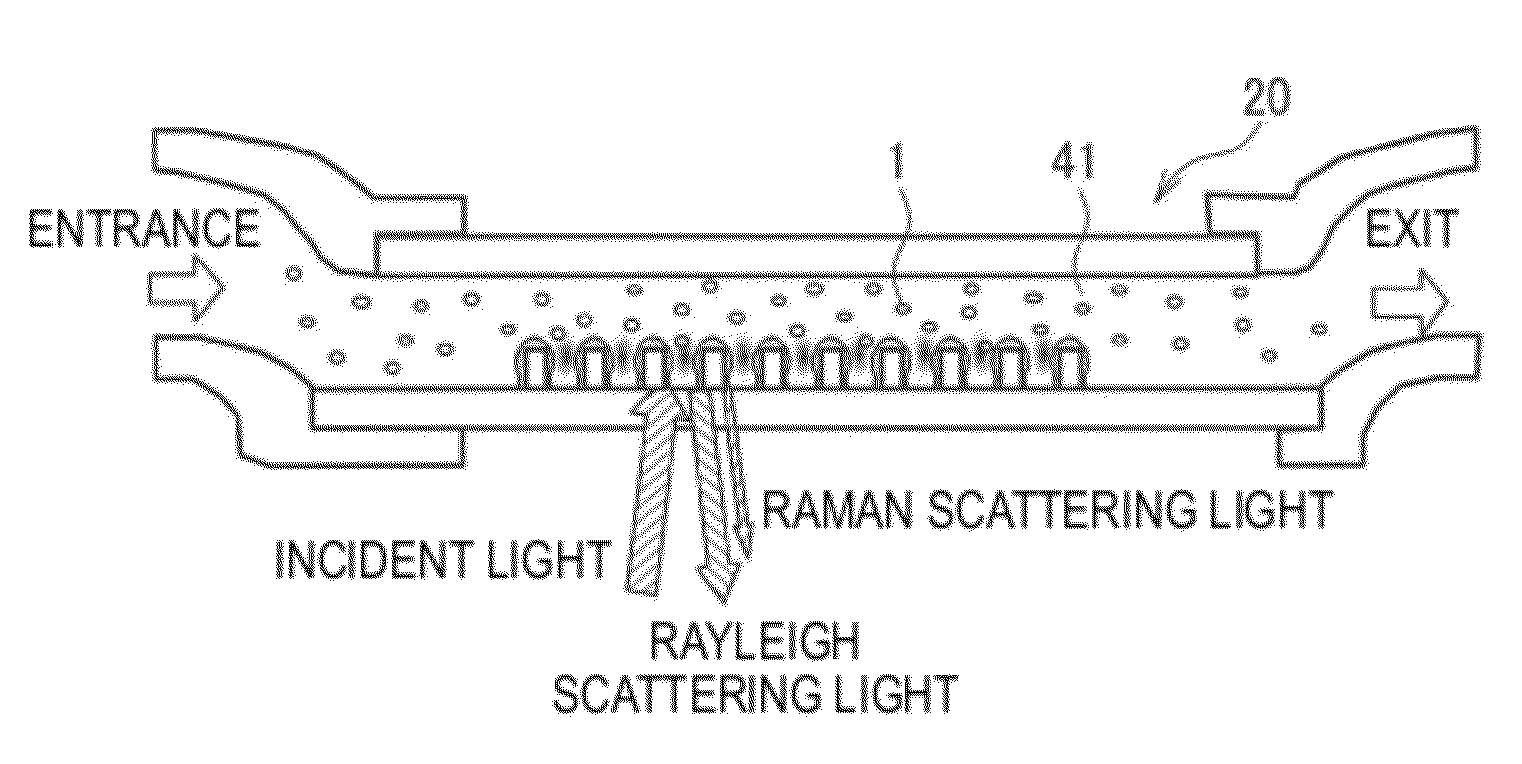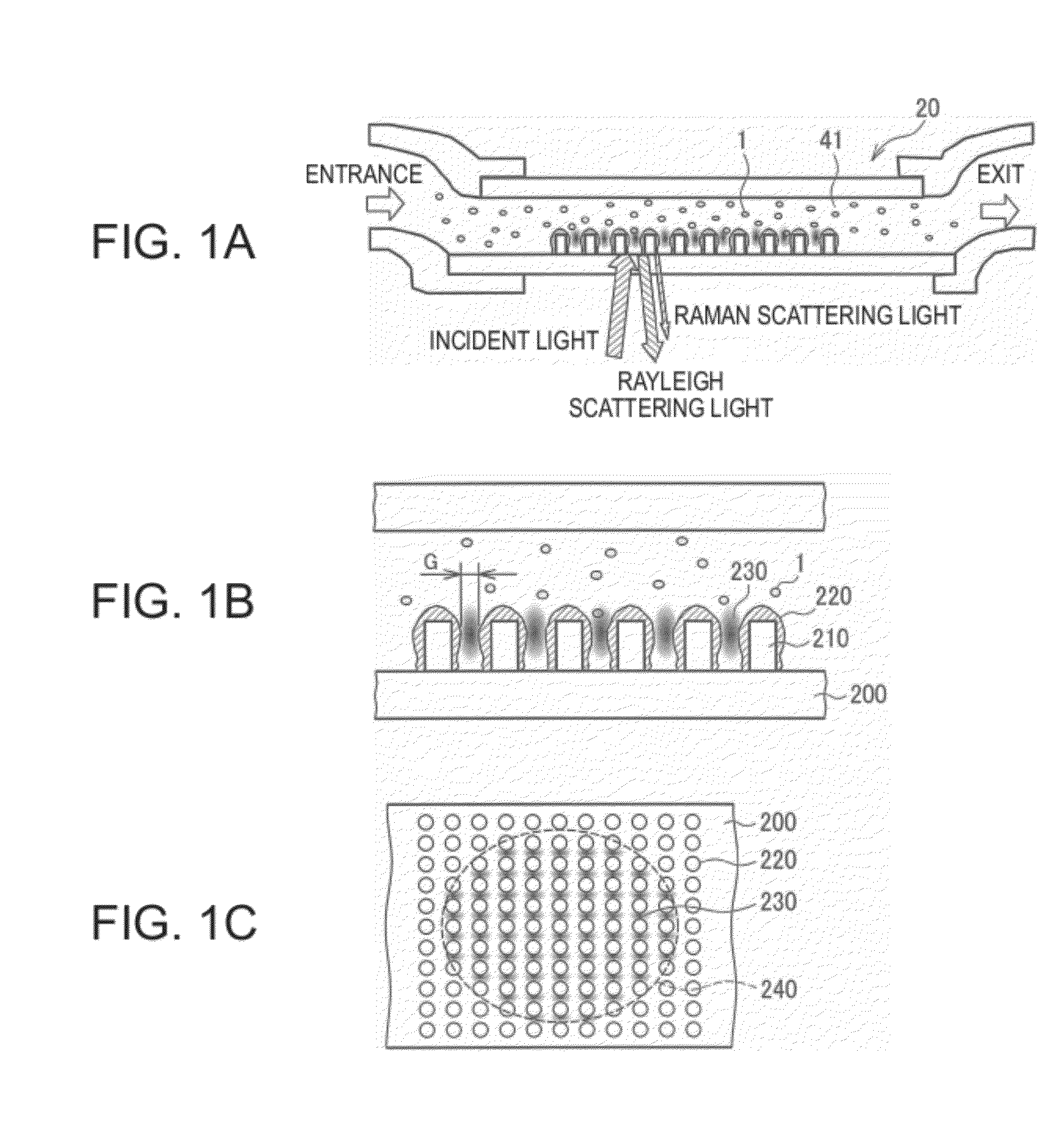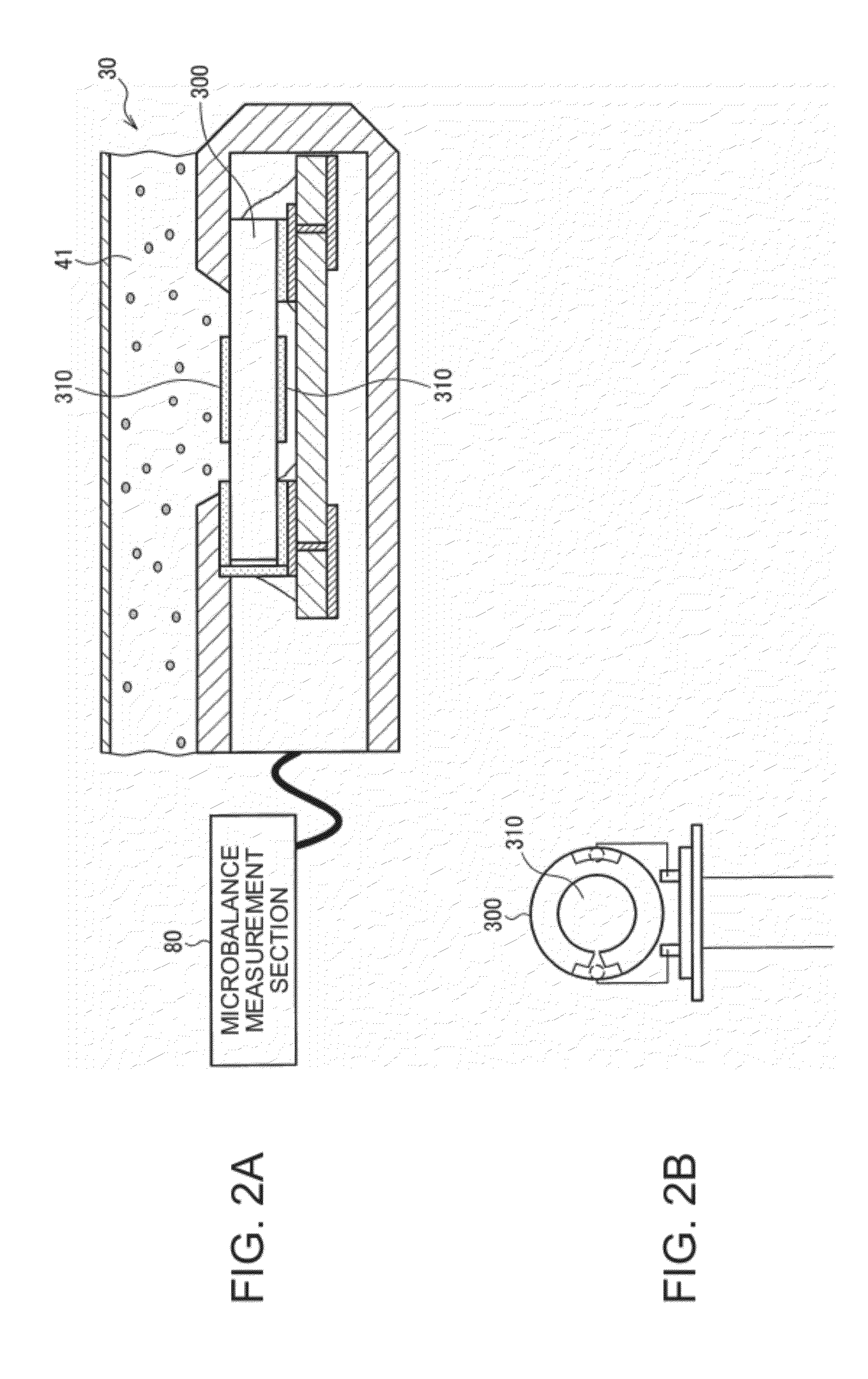Detection device
a detection device and detection technology, applied in the direction of material analysis, weighing by absorbing components, instruments, etc., can solve the problems of inability to quantitatively evaluate, proposed methods fail to work, and quantitative analysis has not yet been achieved, so as to improve sensitivity, reduce the number of hybrid chip members, and facilitate handling
- Summary
- Abstract
- Description
- Claims
- Application Information
AI Technical Summary
Benefits of technology
Problems solved by technology
Method used
Image
Examples
Embodiment Construction
[0031]Hereinafter, a preferred embodiment of the invention will be described in detail. It should be noted that the embodiment explained below does not limit the content of the invention as set forth in the appended claims, and all of the constituents set forth in the present embodiment are not necessarily essential to the invention.
[0032]As shown in FIG. 5 or FIG. 6, the detection device 10A according to the embodiment of the invention is provided with two sensor chips, one is a SERS sensor chip 20 (an optical device), and the other is a microbalance sensor chip 30. These two sensor chips will be explained first.
1. SERS Sensor Chip (Optical Device)
[0033]The sensor chip 20 for detecting the Raman scattering light (an optical device for emitting light corresponding to a fluid sample adsorbed thereto in response to irradiation with light) will be explained with reference to FIGS. 1A through 1C. Explanatory diagrams of the principle will also be shown. It should be noted that in the pr...
PUM
 Login to View More
Login to View More Abstract
Description
Claims
Application Information
 Login to View More
Login to View More - R&D
- Intellectual Property
- Life Sciences
- Materials
- Tech Scout
- Unparalleled Data Quality
- Higher Quality Content
- 60% Fewer Hallucinations
Browse by: Latest US Patents, China's latest patents, Technical Efficacy Thesaurus, Application Domain, Technology Topic, Popular Technical Reports.
© 2025 PatSnap. All rights reserved.Legal|Privacy policy|Modern Slavery Act Transparency Statement|Sitemap|About US| Contact US: help@patsnap.com



